 | Unzul |
| | HO TROVATO QUESTO SU INTERNET, VISTO CHE IL LAVORO E' PREGEVOLE E CHE SE NON ERRO LORD MALDRED E' ANCHE LUI UN LORD DI MUOSILLON POSTO IL LAVORO... 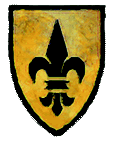  The Storm of Chaos has passed, but the danger is not yet over. In the wake of Archaon's devastating invasion of the Old World, famine, starvation and deprivation stalk the land. Hundreds of thousands have been left homeless, their farmsteads destroyed by marauding Chaos forces, many of whom are still at large in the countryside. Refugees wander the lands of the Empire and Kislev in throngs a thousand strong, accompanied by mad Flagellants, doomsayers and grim Priests of Morr. Though Middenheim did not fall, the ruin visited upon the lands of Men has been terrible indeed. Compounding this hell, the flux of magic from the Umbra Chaotica has wreaked havoc upon the natural cycle of life. The summer of war was followed by a bleak, impenetrable winter that choked the soil of life. After that came a summer of blistering, baking heat that further scourged the already ravaged soil of the Old World. Few crops grew and now, as autumn begins, the feeble grass has been bleached into a deathly, pallid yellow and only a few brown leaves cling to the weakened, skeletal trees. Millions lie dead in charnel pits across the continent, the victims of war, pestilence and famine. Truly, these are the End Times. The Storm of Chaos has passed, but the danger is not yet over. In the wake of Archaon's devastating invasion of the Old World, famine, starvation and deprivation stalk the land. Hundreds of thousands have been left homeless, their farmsteads destroyed by marauding Chaos forces, many of whom are still at large in the countryside. Refugees wander the lands of the Empire and Kislev in throngs a thousand strong, accompanied by mad Flagellants, doomsayers and grim Priests of Morr. Though Middenheim did not fall, the ruin visited upon the lands of Men has been terrible indeed. Compounding this hell, the flux of magic from the Umbra Chaotica has wreaked havoc upon the natural cycle of life. The summer of war was followed by a bleak, impenetrable winter that choked the soil of life. After that came a summer of blistering, baking heat that further scourged the already ravaged soil of the Old World. Few crops grew and now, as autumn begins, the feeble grass has been bleached into a deathly, pallid yellow and only a few brown leaves cling to the weakened, skeletal trees. Millions lie dead in charnel pits across the continent, the victims of war, pestilence and famine. Truly, these are the End Times.
Even in fair Bretonnia, the effects of the last hellish year have been felt. The once fertile soil no longer bears fruit, and the deep forests are almost bare. Bretonnia starves, for its society is wholly dependent on the labour of the serfs on its farmland, and now fully a third of them lie dead, most unburied. Into this grim situation comes a strange ray of light. A month ago, a herald in yellow and black arrived at the gates of Couronne, demanding to see the king. He was admitted into the faded court of Louen Leoncouer and there made his announcement. In its hour of need, Bretonnia would be salvaged: a new flag has been raised around which the knights of the land could rally. A black fleur de lys on a yellow field: the banner of Mousillon, the Cursed City. Cursed no longer though! For its Duke, the mysterious Black Knight has hereby declared that he will lead a great crusade! Let all noble sons of fair Bretonnia take heed and take up arms, for the Black Knight and the lords of Mousillon shall ride across the realm and aim their lances for that blighted kingdom that lies in the very midst of Bretonnia: the foul witch-lair of Athel Loren! Too long have its borders gone uncontested! Now let it be destroyed once and for all!
King Louen was troubled. The flower of Bretonnian chivalry had been bled dry by the Errantry War in The Empire, and such a crusade, contained as it was within the borders of the kingdom, was just what was needed to re-establish the confidence of his forces. But Louen was a Knight of the Grail, and he knew too the dark secret of Mousillon. He knew the truth of its curse; of the dark wings that beat in the night and the whispered rumours of a nameless dread within its deepest crypts. He was in a quandary. To oppose this crusade would divide his Dukes and potentially plunge Bretonnia into civil war, when it could least afford an internal conflict. To support it would mean aligning Bretonnia with a force too dark and terrible to be openly spoken of and he would have no part in any effort to destroy Athel Loren. Though there had been more than a few wars between Bretonnia and the Wood Elves, the King knew all too well what stalwart allies the Fey Folk were against external threats. Both peoples were of this land, and they respected each other's sovereignty. So do nothing? But Athel Loren had suffered this past year too – with almost no natural growth, their mighty Forest Spirits were dormant and vulnerable, to say nothing of their own sacrifices in the war against Archaon. King Louen worried that the Black Knight's crusade would succeed, and this was the most dangerous possibility of all. The Fay Enchantress had told him long ago that, if Athel Loren fell, Bretonnia itself would soon follow.
He would trust then to the natural justice of his people. Louen Leoncouer, uncharacteristically, chose to stand by. Not pledging support for or opposing the Black Knight of Mousillon was his only option. Let him try to cross Bretonnia by moonslight alone, as the King knew he surely must, and see whether he attracted men to his banner. The King was confident that his fellow Grail Knights who, like him, could sense the nature of Mousillon's curse, would rally the Knights of Bretonnia against this dark enemy.
Deep in his fortress within Mousillon, the Black Knight read the King's neutral reply and donned his all-enclosing helm. No living man had seen his face, so none could say if he smiled or not.
Le Chevalier Noir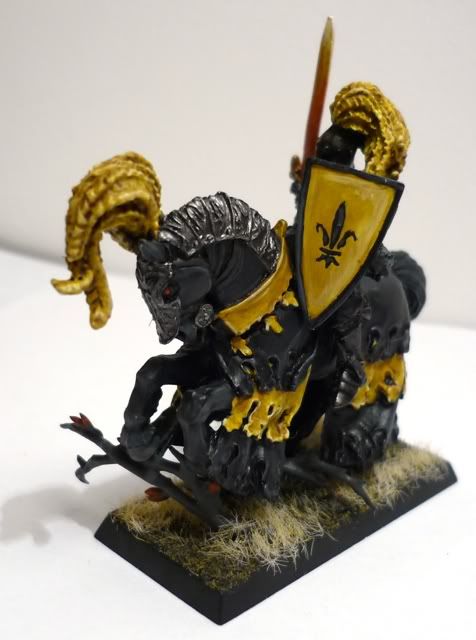 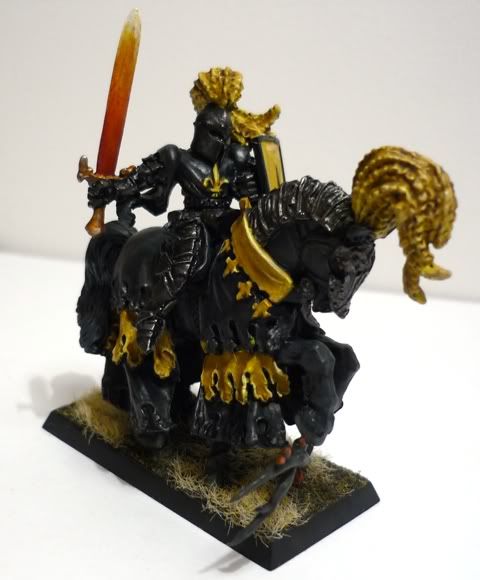
The Black Knight is an enduring myth in Bretonnia. Facing his facsimile forms the centrepiece of the Tableux de Battaile in tourneys across the nation, and he is seen as a dark counterpart to the protective Green Knight, who is known to manifest in places scared to the Lady. There is no physical Black Knight – he is a figure of folklore and superstition only – but, in recent years, many claim to have seen a warrior matching his description travelling the narrow bridleways of the cursed dukedom of Mousillon. It is said that he rides on a black destrier with glowing red eyes that snorts flame and, when challenged, intones only three words: "None shall pass." When the flag of Mousillon was raised once more, the alleged Duke appeared in blackened armour and, wearing the drab colours of Mousillon, he presented an all too familiar figure. That he courted such suspicion and did nothing to discourage the people of Bretonnia calling him the Black Knight perhaps speaks volumes about his intent. No one has ever heard him speak, none have ever seen his face and he seems to move abroad only at night, shunning the light of the sun. In the air above him fly clouds of bloated bats from the twisted forests of Mousillon and around him hangs the charnel stench of death. His army seem to follow him with unerring loyalty, moving only by the light of the moon. His only companion is the mysterious Dark Lady of Mousillon, a pale woman of terrible beauty who appears to speak for the Black Knight. The Chadaverous Levy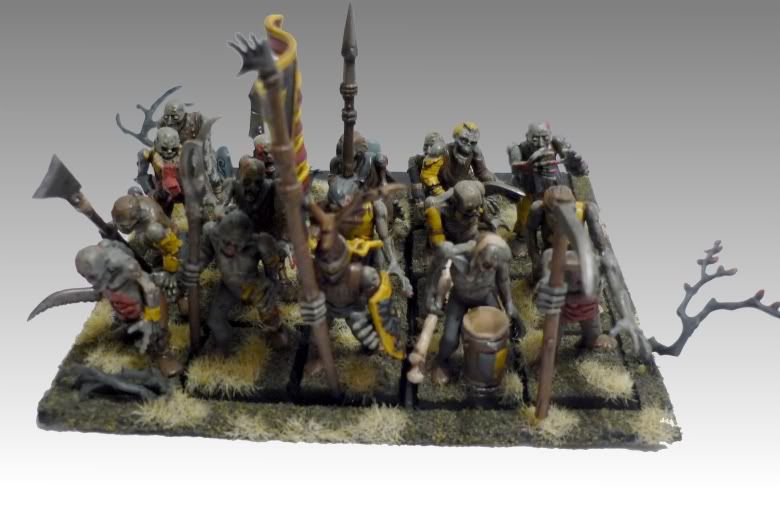 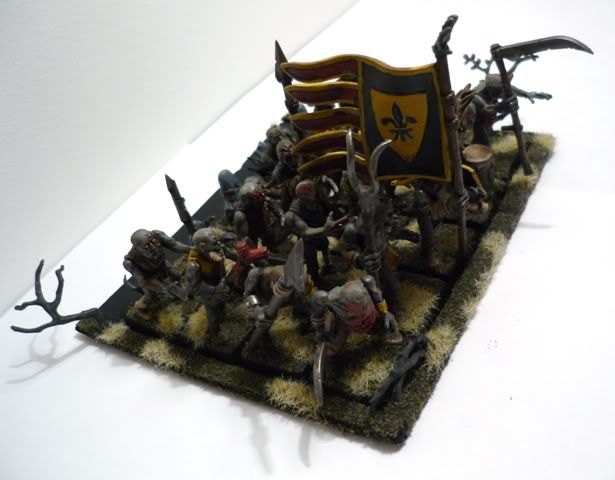 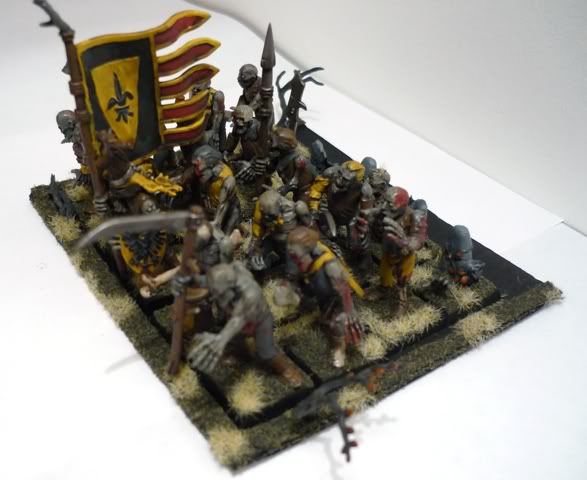 Lords of Bretonnia are always followed into battle by their commoner servants. Men at Arms and Peasant Bowmen, as well as levies of farm labourers armed with hoe and scythe, march to war in supported of the great regiments of gleaming knights. The Black Knight is no different, although his followers seem to be of a different kind. They move with lurching slowness, and smell bad even for peasants! Those who have observed them closely do not speak of what they saw, and the inhabitants of Mousillon never talk about the graves found unearthed in the morning, their occupants missing.Spectral Knights Lords of Bretonnia are always followed into battle by their commoner servants. Men at Arms and Peasant Bowmen, as well as levies of farm labourers armed with hoe and scythe, march to war in supported of the great regiments of gleaming knights. The Black Knight is no different, although his followers seem to be of a different kind. They move with lurching slowness, and smell bad even for peasants! Those who have observed them closely do not speak of what they saw, and the inhabitants of Mousillon never talk about the graves found unearthed in the morning, their occupants missing.Spectral Knights 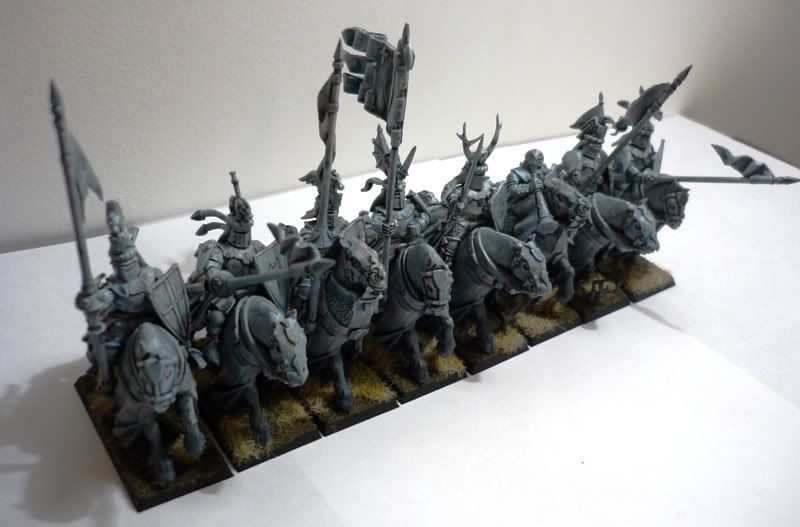 Long has Mousillon been the target of adventurous knights seeking fame and fortune by single-handedly cleansing the Cursed City. Kind Louen's hopes also proved well founded when, as the host of Mousillon marched out, many Bretonnian retinues opposed him. However, no knight has yet managed to survive an encounter with the forces of the Black Knight. Fighting only at night, using the weapons of fear and darkness to his advantage, the Black Knight has vanquished all sent against him. Those who are unworthy of his attention – Knights Errant and Knights of the Realm who pose no threat to him – now seem to fight for him. Men who swear they saw their masters slain now also swear they see those same knights following the Black Knight. The light of the moons can play strange tricks on the eyes, but does it seem as if a ghostly glow hangs about these knights now? Perhaps they march under a banner that offers some strange enchantment, for they seem to pass straight through all obstacles, floating above the earth, charging on spectral wings... Long has Mousillon been the target of adventurous knights seeking fame and fortune by single-handedly cleansing the Cursed City. Kind Louen's hopes also proved well founded when, as the host of Mousillon marched out, many Bretonnian retinues opposed him. However, no knight has yet managed to survive an encounter with the forces of the Black Knight. Fighting only at night, using the weapons of fear and darkness to his advantage, the Black Knight has vanquished all sent against him. Those who are unworthy of his attention – Knights Errant and Knights of the Realm who pose no threat to him – now seem to fight for him. Men who swear they saw their masters slain now also swear they see those same knights following the Black Knight. The light of the moons can play strange tricks on the eyes, but does it seem as if a ghostly glow hangs about these knights now? Perhaps they march under a banner that offers some strange enchantment, for they seem to pass straight through all obstacles, floating above the earth, charging on spectral wings...
Of those knights who the Black Knight did find worthy – usually mighty Questing Knights and blessed Grail Knights – there are rumours that a darker destiny awaits...Ravenants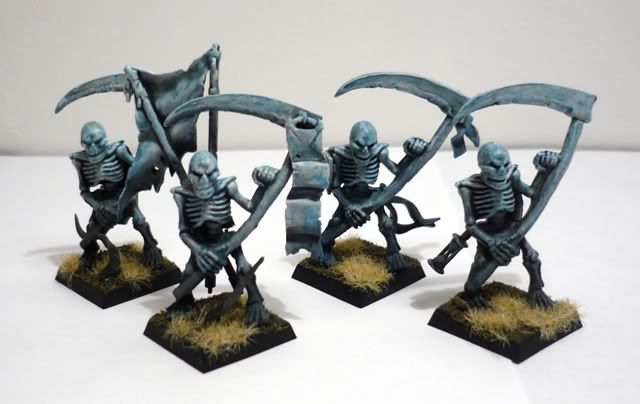 Priests of Morr are common, even in Bretonnia. They are generally resented by the nobility, for they provide the peasantry with a religion of their own, partially freeing them from the bonds of Bretonnian society. For this reason, knights often try to drive Priests of Morr out of their domains, inventing any excuse to move them along. In more backwater areas, away from the influence of the King or a Duke, there are other options. Unscrupulous Barons have been known to murder Priests (often blaming hunting accidents) or, worse, whip up their peasants into a frenzy of murderous rage by creating trumped up rumours of Necromancy. Many a Bretonnian Lord has looked the other way as a lynch mob of commoners physically tears apart a Priest of Morr with their bear hands, or subjects him to elaborate tortures and trials. In Mousillon, this behaviour is all too common. Priests of Morr gravitate there because they sense the Dark Magic that pools in the region and they often meet a grizzly end thanks to their inquisitiveness. It is said that in the army of the Black Knight, skeletal figures bearing the scythes and hourglasses of Morr's priesthood march alongside the other soldiers. A fanciful notion, surely, but could these be the unquiet spirits of those murdered clergymen, come back to wreak revenge? Priests of Morr are common, even in Bretonnia. They are generally resented by the nobility, for they provide the peasantry with a religion of their own, partially freeing them from the bonds of Bretonnian society. For this reason, knights often try to drive Priests of Morr out of their domains, inventing any excuse to move them along. In more backwater areas, away from the influence of the King or a Duke, there are other options. Unscrupulous Barons have been known to murder Priests (often blaming hunting accidents) or, worse, whip up their peasants into a frenzy of murderous rage by creating trumped up rumours of Necromancy. Many a Bretonnian Lord has looked the other way as a lynch mob of commoners physically tears apart a Priest of Morr with their bear hands, or subjects him to elaborate tortures and trials. In Mousillon, this behaviour is all too common. Priests of Morr gravitate there because they sense the Dark Magic that pools in the region and they often meet a grizzly end thanks to their inquisitiveness. It is said that in the army of the Black Knight, skeletal figures bearing the scythes and hourglasses of Morr's priesthood march alongside the other soldiers. A fanciful notion, surely, but could these be the unquiet spirits of those murdered clergymen, come back to wreak revenge?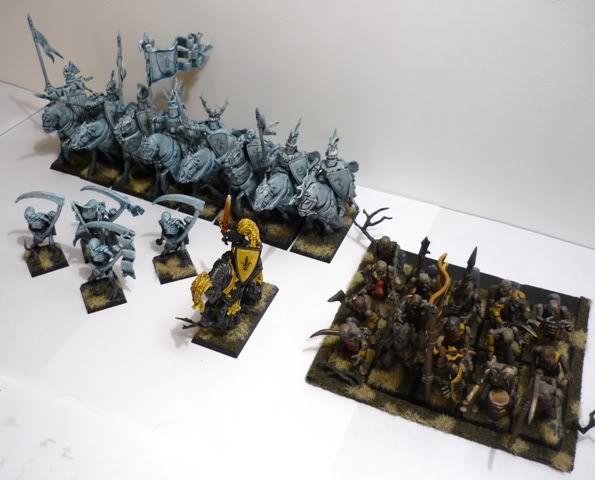  | | | |
|  |
|



